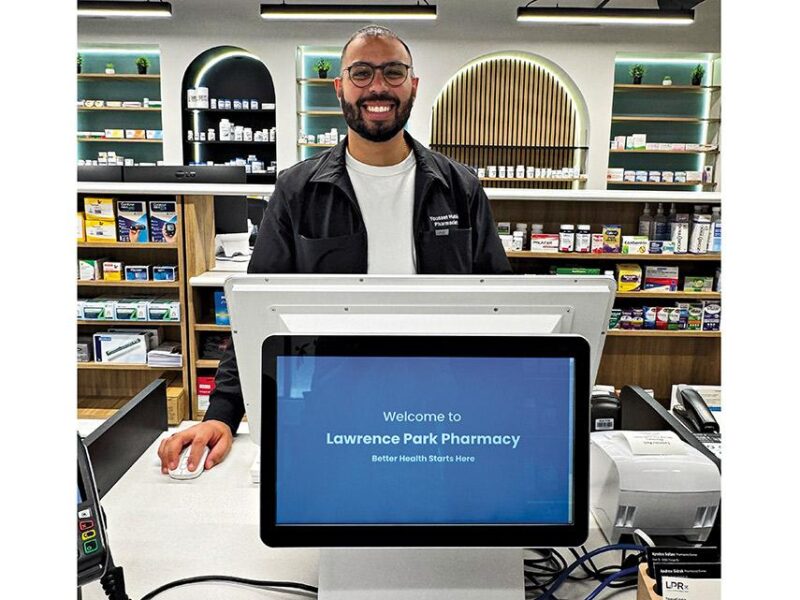
Saving Piper
By Chris Lee, as told to Sandra Gordon
When my daughter, Piper, and her fraternal twin sister, Harper, were born on May 13, 2013, my wife, Erin and I, were ecstatic. Despite arriving seven weeks early and weighing just 4.5 pounds each, both babies were healthy.
We had done everything we could to ensure the best possible outcome. But it was such a relief. After years of infertility, Erin and I had used in-vitro fertilization (IVF) to conceive Piper, Harper and our older daughter, Sophia, who was 3.
During the process, the embryos that resulted in Piper and Harper had undergone genetic testing. Both embryos were perfect. And aside from
some morning sickness, Erin’s pregnancy went smoothly, just as it had with Sophia.
The first year with Piper and Harper was typical twin stuff. We didn’t get much sleep, but both kids were developing normally. Early on, we could see that Piper,
the more petite of the twins, possessed a big personality. She had an independent spirit and her own agenda. You can get a hug and a kiss from her,
but only on her terms. Harper has always been the more laid back twin, and quick to dole out affection.
One day just before the twins’ first birthday, however, Erin and I noticed that Piper’s cheeks were puffy when she woke up from her afternoon nap. We thought it
was odd, but because it was spring, we assumed it was allergies. The next day it was worse. Piper’s eyes were swollen shut.
Dire News
Erin took Piper to our local pediatrician, who couldn’t tell what was wrong, though she suspected it was kidney related. Because Piper’s blood pressure was
dangerously high, Piper was admitted to the local children’s hospital. One of the things the kidneys do is regulate blood pressure. While Piper was being treated for hypertension, she was assigned a pediatric nephrologist. To determine what was causing Piper’s kidney problem, the doctor had the foresight
to send samples of Piper’s blood to a genetic testing laboratory in Bristol, England.
The lab had the capability to test the genetic markers related to the kidney. When the results came back, they were definitive. Piper had a mutation on the WT1 gene, which meant she had Denys-Drash
Syndrome, an extremely rare genetic kidney disorder that can result in kidney failure. Even worse, children with Denys-Drash Syndrome typically develop a
cancerous mass on their kidneys known as Wilms’ tumor, which can quickly spread to the lungs and become fatal just like any aggressive form of cancer can. Erin and I learned that Piper had a 90 per cent chance of developing kidney cancer by age 2.
Although Piper came from a healthy embryo, she had acquired a spontaneous genetic mutation during gestation that’s not inherited from either parent. Suddenly, Piper became a statistic. She was one of only 200 documented cases of
Denys-Drash Syndrome in the world.
A Race Against Time
When Piper was diagnosed, her kidneys were still working pretty well. But the clock was suddenly ticking loudly. She was 13 months old. That meant
that we had less than a year before kidney cancer would likely develop. While we were absorbing the news, we meet with a Wilms’ tumor and other
specialists to decide what to do. Meanwhile, during a CT scan, Piper’s kidneys failed. Consequently, at just 15-months old, she had to begin dialysis four days per week.
To keep her blood pressure from spiking to dangerously high levels, Piper had to be given strong blood pressure medication. The drugs made Piper
lethargic. Every day, she would just sit there, with a blank look on her face. It was so sad to see.
When Piper was just 17 months old, she underwent surgery to remove both of her failed kidneys. After conferring with specialists, Erin and I felt
Piper’s kidneys were toxic. We were so concerned about the cancer risk that we wanted to make sure her kidneys were removed before any cancer
cells developed. The operation left a scar from Piper’s mid-chest to just below her belly button. But she recovered quickly.
A Good Fit
Meanwhile, Erin and I began undergoing rounds of compatibility testing to determine if we were a genetic match for kidney donation. It typically
takes four to six months to undergo all of the lab work. But I broke all the records. It was done in 12 weeks. It turns out that I was the perfect kidney
donor for Piper. The irony? Of all our three children, Piper, with her brown hair and big brown eyes, looks the most like me too.
To transplant an adult-size kidney into a toddler’s body, space is an issue. At 6’2” and 245 pounds, I’m a big guy. Would my kidney be too large to
fit into Piper? Doctors were concerned. But after measuring to the best of their ability, they estimated my kidney to be 10 centimeters long and that
Piper had a 13 centimeter space in her abdomen, where one of her kidneys had been. Fortunately, there was room.
On December 16, 2014, Piper and I underwent surgery together. A leading transplant surgeon removed one of my healthy adult-sized kidneys and
implanted it into Piper. By that point, it had been months since Piper had urinated. But the minute they hooked up my kidney into her, it started
working. Piper peed right on the operating table!
Recovering from the surgery for me was worse than I had anticipated. Doctors said they had warned me about the pain, but once I had learned that I was a perfect match for Piper, I hadn’t heard any of it. Within four days, however, I felt better and returned to work two weeks later. Piper rebounded much faster. Like I said, she’s tough. She was up
bouncing around within a day. She spent nine days in the hospital, just to play it safe, and came home the day after Christmas, just in time for her
older sister, Sophia’s fourth birthday.
Back to Her Spunky Self
Since her transplant, Piper has been on immunosuppressant therapy to keep her little body from rejecting my transplanted kidney. She’ll be on
that medication all of her life. But she’s off her high blood pressure medication. She’s back at daycare with her sisters and to being her independent
little self. She has regained her status as the leader of the twins and I can tell that Harper is happy about it. She didn’t like being in charge. Over time,
my kidney will shrink inside of Piper and my remaining kidney will enlarge. It probably already has. I should get up to 85 per cent kidney function.
There’s a 50/50 chance Piper could pass the Denys-Drash gene defect onto her children, which Erin and I plan to talk with her about in time. But by
all accounts, Piper can expect to live a long and healthy life.





